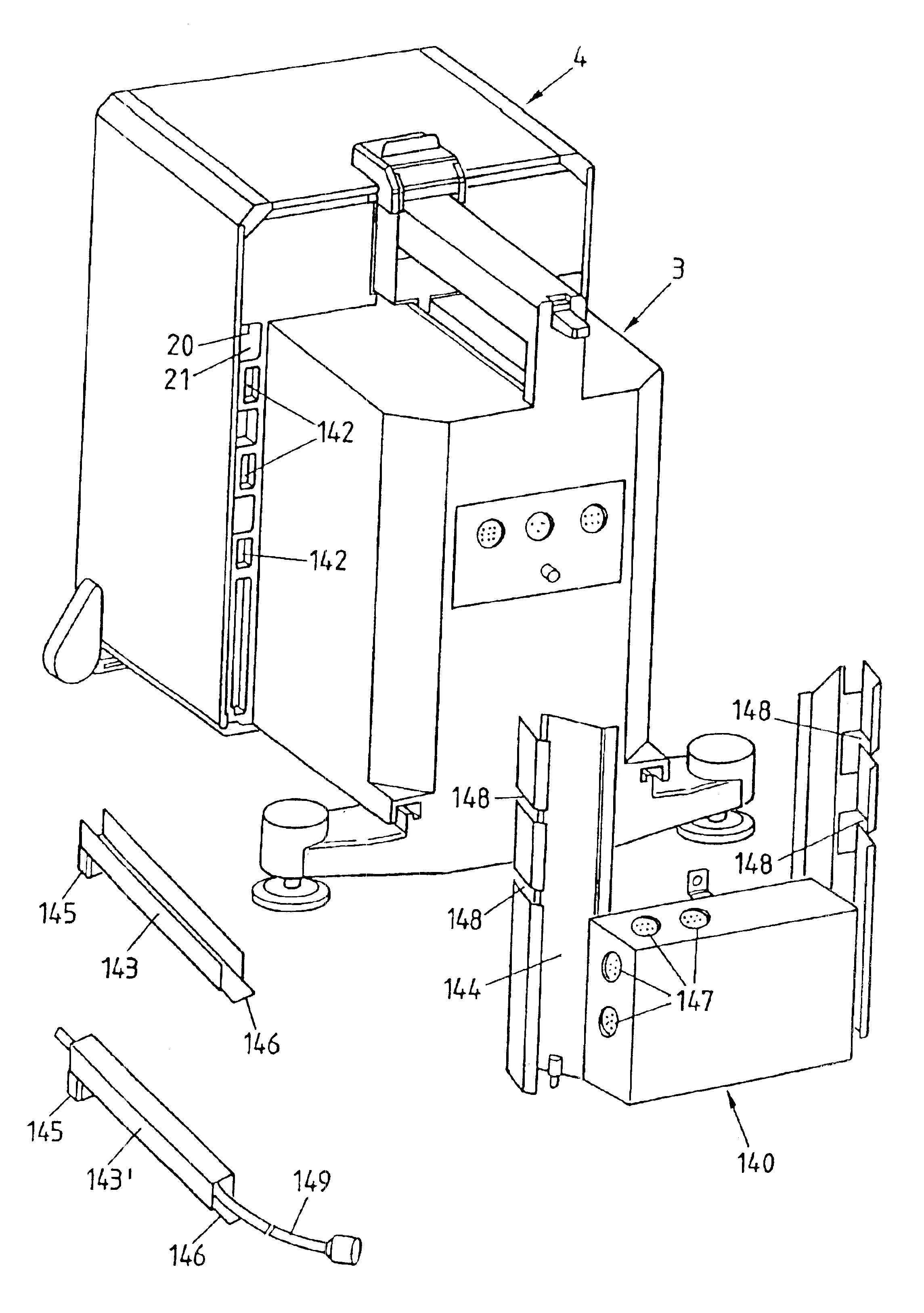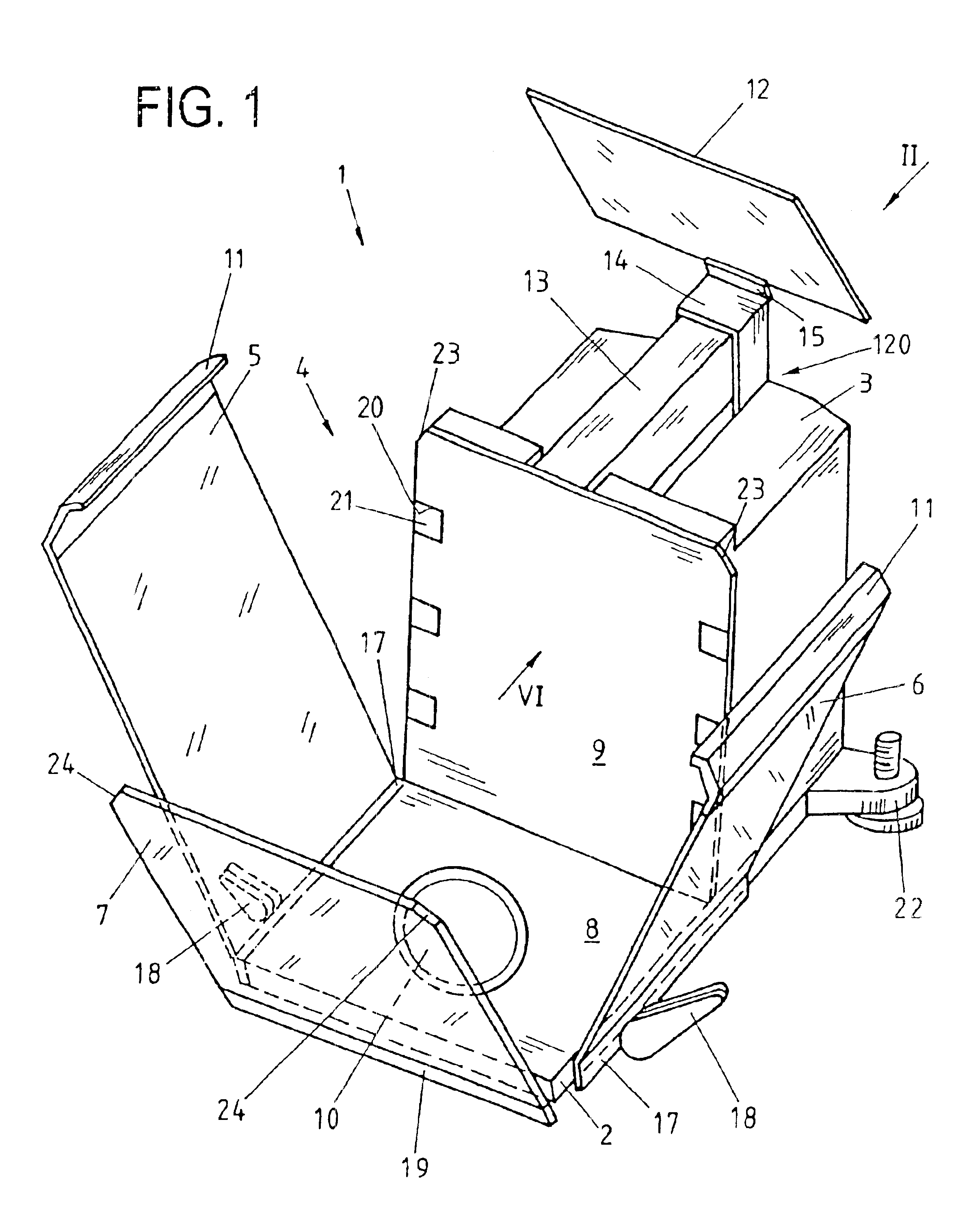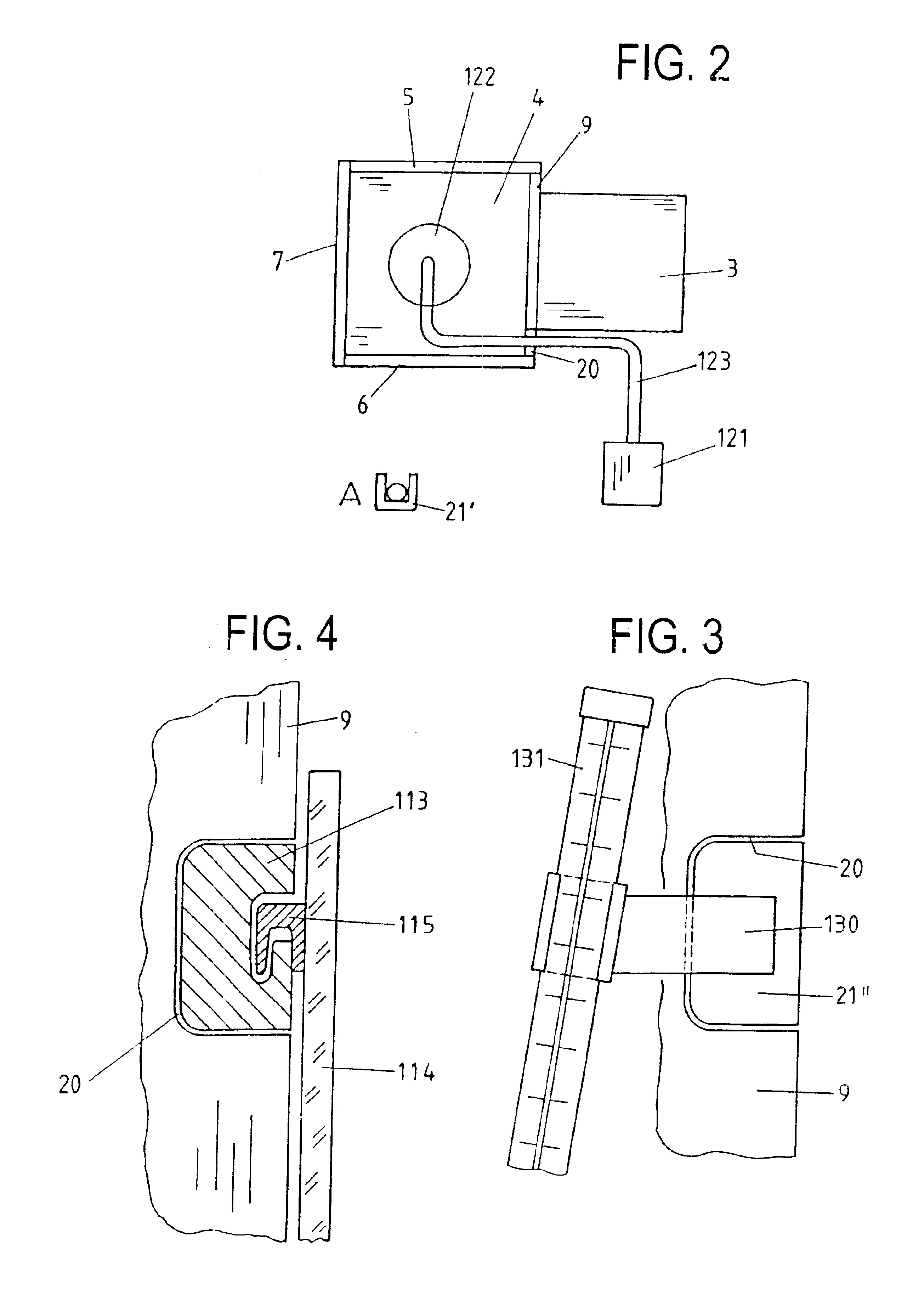Balance with a weighing compartment
a weighing compartment and balance technology, applied in the field of balance with a weighing compartment, can solve the problems of high precision, weighing errors, and design that is still not entirely satisfactory, and achieve the effects of simple manner, minimum manipulation, and good accessibility
- Summary
- Abstract
- Description
- Claims
- Application Information
AI Technical Summary
Benefits of technology
Problems solved by technology
Method used
Image
Examples
Embodiment Construction
[0019]A balance according to FIG. 1 has a stationary part with a floor compartment 2 that contains a portion of the working system of the balance, a housing 3 that essentially contains the drive mechanism, and a weighing compartment 4. The rear wall 9 and the floor 8 of the weighing compartment 4 are formed by the stationary part. The weighing compartment 4 is further enclosed by the side walls 5, 6, the front wall 7, and the top cover panel 12, which serve as a draft shield. The floor 8 has a pass-through opening for the carrier of the weighing pan 10. However, the weighing pan can also be supported by an L-shaped cantilever arm that is attached to a coupling arrangement that passes through the rear wall of the weighing compartment, as described in EP 1 195 586 A1. The different designs of the weighing pan and / or the features of the weighing compartment described in the reference just mentioned are likewise applicable to the balance described herein.
[0020]Preferably, the balance 1 ...
PUM
 Login to View More
Login to View More Abstract
Description
Claims
Application Information
 Login to View More
Login to View More - R&D
- Intellectual Property
- Life Sciences
- Materials
- Tech Scout
- Unparalleled Data Quality
- Higher Quality Content
- 60% Fewer Hallucinations
Browse by: Latest US Patents, China's latest patents, Technical Efficacy Thesaurus, Application Domain, Technology Topic, Popular Technical Reports.
© 2025 PatSnap. All rights reserved.Legal|Privacy policy|Modern Slavery Act Transparency Statement|Sitemap|About US| Contact US: help@patsnap.com



